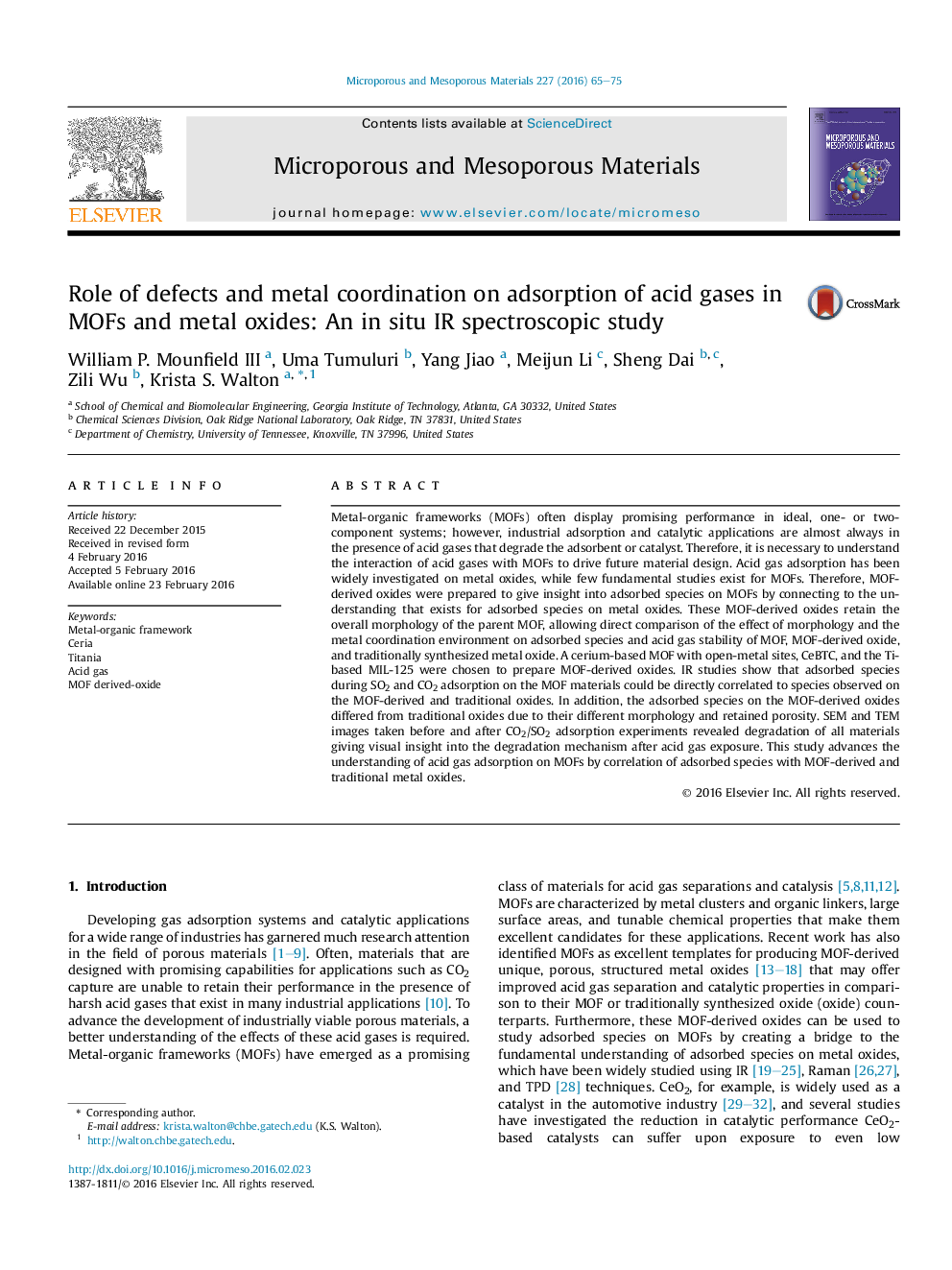| Article ID | Journal | Published Year | Pages | File Type |
|---|---|---|---|---|
| 72138 | Microporous and Mesoporous Materials | 2016 | 11 Pages |
•Acid gas exposure investigated over Ce and Ti-based MOFs and metal oxides.•Adsorbed acid gas species correlated between MOFs and MOF-derived oxides.•Degradation during SO2 exposure observed for MIL-125 and derived TiO2 through SEM.•Degradation during H2O exposure proceeds slower than during SO2.
Metal-organic frameworks (MOFs) often display promising performance in ideal, one- or two-component systems; however, industrial adsorption and catalytic applications are almost always in the presence of acid gases that degrade the adsorbent or catalyst. Therefore, it is necessary to understand the interaction of acid gases with MOFs to drive future material design. Acid gas adsorption has been widely investigated on metal oxides, while few fundamental studies exist for MOFs. Therefore, MOF-derived oxides were prepared to give insight into adsorbed species on MOFs by connecting to the understanding that exists for adsorbed species on metal oxides. These MOF-derived oxides retain the overall morphology of the parent MOF, allowing direct comparison of the effect of morphology and the metal coordination environment on adsorbed species and acid gas stability of MOF, MOF-derived oxide, and traditionally synthesized metal oxide. A cerium-based MOF with open-metal sites, CeBTC, and the Ti-based MIL-125 were chosen to prepare MOF-derived oxides. IR studies show that adsorbed species during SO2 and CO2 adsorption on the MOF materials could be directly correlated to species observed on the MOF-derived and traditional oxides. In addition, the adsorbed species on the MOF-derived oxides differed from traditional oxides due to their different morphology and retained porosity. SEM and TEM images taken before and after CO2/SO2 adsorption experiments revealed degradation of all materials giving visual insight into the degradation mechanism after acid gas exposure. This study advances the understanding of acid gas adsorption on MOFs by correlation of adsorbed species with MOF-derived and traditional metal oxides.
Graphical abstractFigure optionsDownload full-size imageDownload as PowerPoint slide
